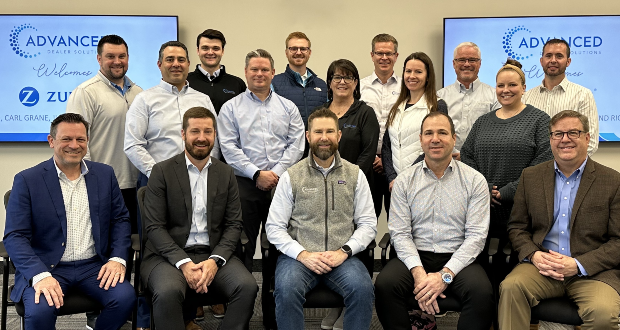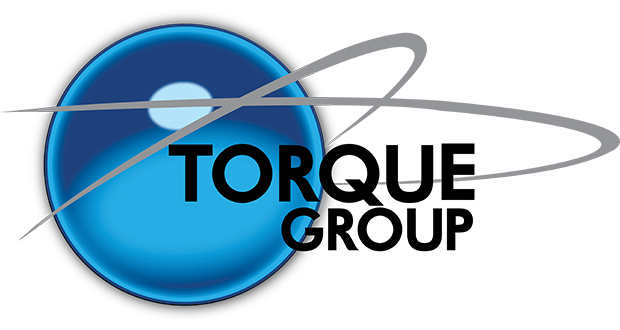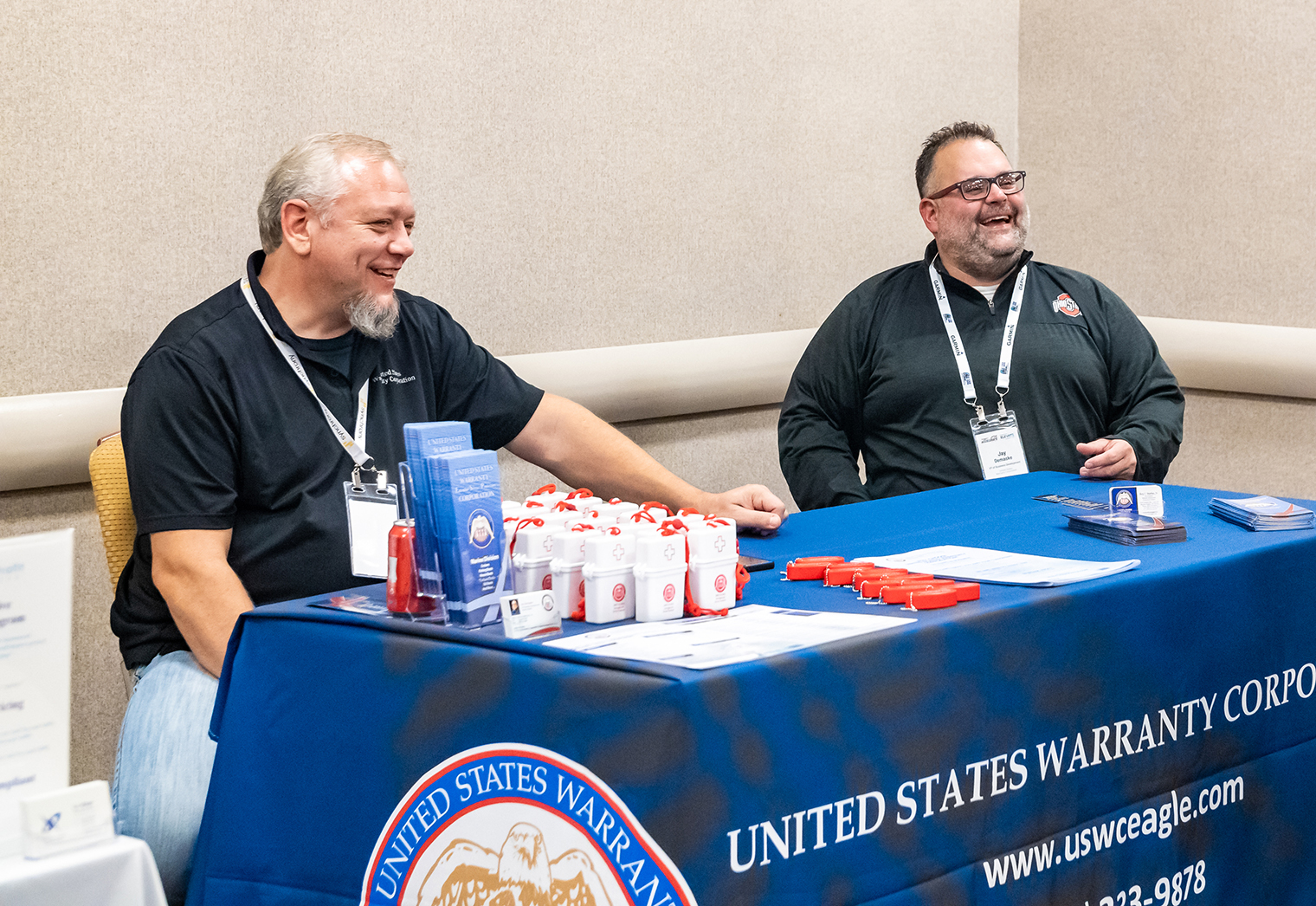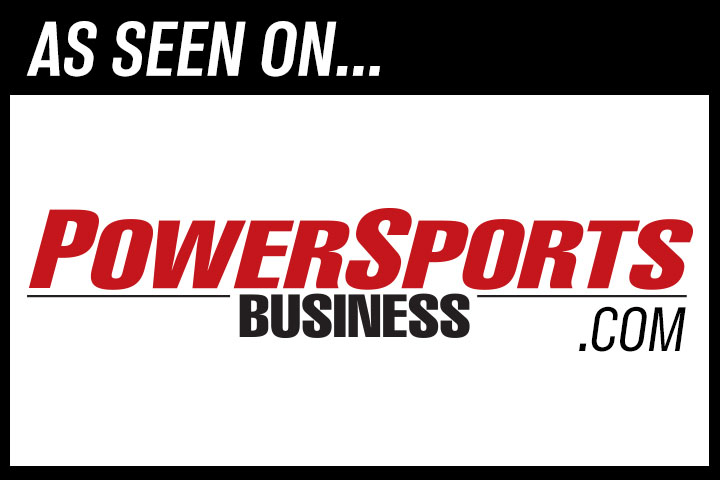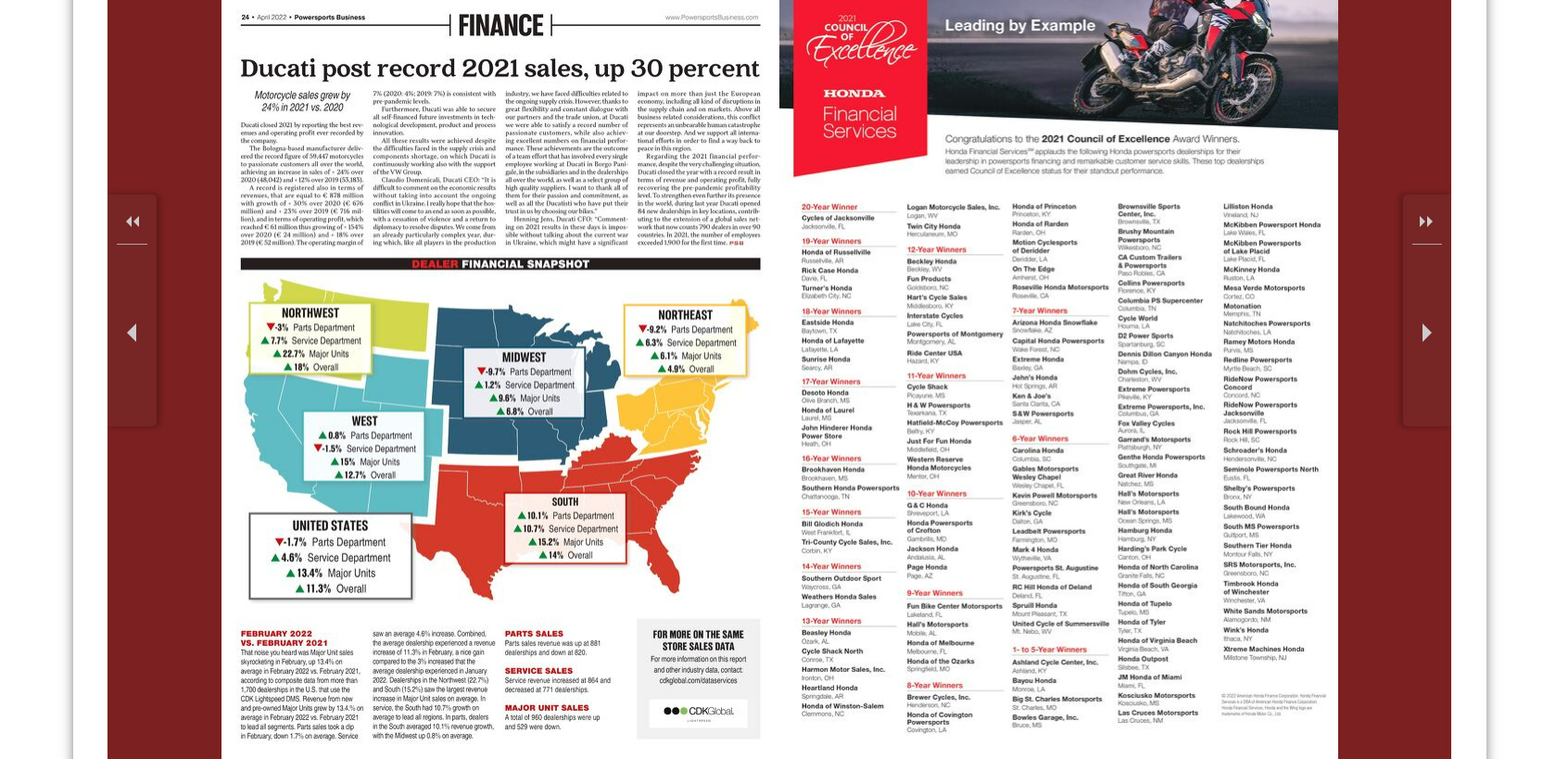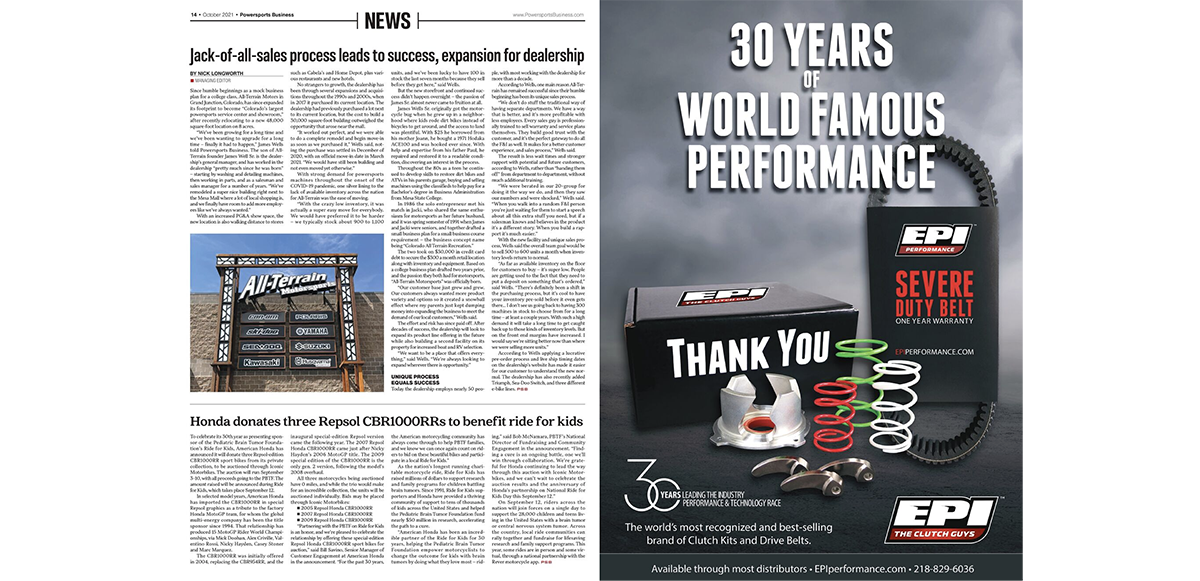Rob Greenwald explains why F&I should be a top priority right now
We sat down recently with F&I expert Rob Greenwald, president of PowerSport Solutions. He has coached hundreds of dealers on making the most of this often-ignored part of the powersports store. According to Greenwald, the finance and insurance department IS the most profitable part of the dealership per square foot and investment, and has the lowest overhead compared to the other departments. Of course, Greenwald may be slightly biased with his opinion as he has been teaching the finer points of F&I since the late 1980s.
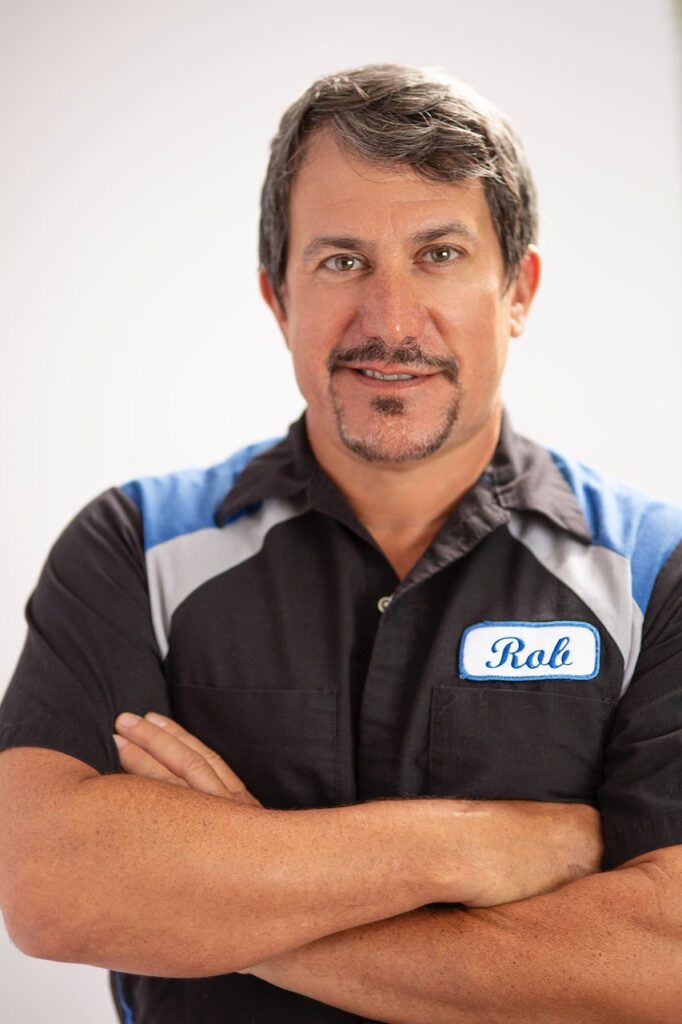
He started with F&I in the automotive world, but he hated it. Regardless of his dislike of the job at the time, he was considered one of the top F&I producers for Chrysler/ Dodge in the Southeast back then, using his own unique style. But he loved motorcycle racing and decided to turn in his menu (they didn’t even have them back then) for twisting the throttle at racetracks around the country. But, like many racers, he eventually needed money to keep going, so he brought his unique brand of selling F&I products to the powersports world. He was able to combine his passion with his knowledge when F&I was in its infancy in the powersports industry. And the rest is history (some of it is still in the making). Greenwald utilizes unique approaches, some of which stem from his psychology background blended with his real-world experience to make for what he calls, “a very spicy gumbo!”
What are the biggest pitfalls dealers have regarding F&I in their stores?
Greenwald says that success in F&I comes down to people. “Your people are your X factor when it comes to F&I, so when you have weak managers or people who don’t follow structure well, it can impact performance. For example, a menu is great because it gives you structure when you have someone who is not producing well or needs to follow a system (although Rob says most elite performers follow a completely different approach). Many things make you successful in F&I. There’s a rule that says you should sell 100% of the products to 100% of the qualified people 100% of the time. You can never prequalify with any sale. You can’t assume you know what someone will want even if you’ve been a salesperson for a long time. Everyone’s guilty of that one. So, people are one of the biggest pitfalls for dealers and how they treat F&I. The right people are the biggest X factor in F&I.”
Greenwald goes on to explain why F&I is the most profitable department in the dealership per square footage. He says that compared to other departments, such as sales, where you need a huge showroom full of inventory, or a parts department with thousands of parts on the shelves, the F&I department only needs an office or maybe two or three offices, depending on the size of the dealership. “Some dealers don’t even want to invest in a quality F&I office,” he says.
Greenwald claims that all a dealer needs to make money in F&I is a computer and a well-trained manager. “I have a lot of F&I managers that I work with in metric stores that are getting over $1,500 per copy, some are even eclipsing $2,000 per unit. According to data in the PSB Market Data Book, the national average F&I per copy as of a year ago was $370. “It was running at about $300 for years. My benchmark is $1,000 per copy at a metric store. Harley is a different animal, the PVRs there are even higher due to the nature of the beast. But when you’re carrying Japanese brands, Polaris, and other brands like that, $1,000 a copy is starting to do a decent job in my book.”
Greenwald points out that a typical dealer will have invested a lot of money in advertising to get the customer in the dealership, and it may only be for $100 profit on the front end. “You are spending millions in floorplan inventory, but the customer goes to the F&I office, and 40 minutes later, you can have a much larger profit if you do it right.”
Some dealers worry about F&I scaring the customer away, according to Greenwald, and many want to get them in and out as quickly as possible. But that may only sometimes lead to success or profit on the back end. “I talk about how time is money in many of my classes. It’s all about time management and how you invest your time throughout your day as well as in your deals. I often get asked, ‘What is the proper amount of time to spend in F&I?’ It depends completely upon the customer engagement. If your salesperson has been working on the sale for multiple days and has four to five hours invested in the customer, you don’t want to scare them off, but a good F&I manager may generate more than the front-end profit. So do you really want to rush the customer out of there in 20 minutes?”
Greenwald notes that if the customer is engaged, and the process is going well, giving full disclosure, and so on, the answer is whatever time it takes to complete the process. “I find it averages around 40 minutes, sometimes a little longer, but that varies based on the experience.”
This goes back to the original question: What are dealers’ biggest pitfalls with F&I? According to Greenwald, many dealer principals need to invest in training or having a quality F&I manager. He says that in many of the stores he coaches, the F&I manager isone of the highest paid employees. He calls the process of grading what’s most important to a dealership the “reciprocal action of F&I,” which is something he has talked about in his workshops over the last couple of decades. “You have to look at a product for what it is, what it does, and the benefits, both today (profit), as well as in the future. That’s how you grade what’s most important. And what you sell is the economics of the service contract.”
An interesting statistic that Greenwald told us is that mechanical issues (i.e., brokendown machines) are the number one cause of repossessions in powersports. “This is why a service contract serves multiple purposes. One, it keeps customers riding, which also keeps them spending money. You don’t buy a Toyota Camry and go to the Toyota dealer every year to buy new gloves and a jacket to drive your Camry. We may sell motorcycles as a dealership, but what we REALLY sell is fun and lifestyle. We sell wants, not needs. And that’s the difference between us and the car business. You need transportation to work to earn money to pick up your groceries. But you WANT a motorcycle. So we have to look at what we are selling, and it creates a different avenue to tap into the emotion of the buyer.”
Keeping the customer riding is one of the most crucial things to the success of the machine. Because what we sell is a lifestyle, we sell parts and accessories. You even have Certified Chrome and Motor Clothes consultants if you’re a Harley dealer. Some people specifically work with accessorizing both the machine and the rider. So that tells you the value of a customer.
“Service contracts are always the most important in F&I because, again – this statistic came from banks 20 years ago, and it’s still the same today,” Greenwald adds. “What is the number one cause of repossessions in powersports? It breaks. You can’t afford to have your car broken down; you’ve got to find a way to fix it because it gets you to your job. But if you have a side-by-side and the engine locks up, and you’re on a tight budget with an $8,000 bill, and you’re paying $350− $400 a month for that thing to sit in your garage, then what do some people do? They say, ‘You know what? Come and get it. I don’t have the money to fix it. And I don’t have the creditworthiness to do it.’”
While service contracts are profitable, according to Greenwald, they are not the end-all-be-all. “You also have to look for other good F&I products to keep the customer coming to your dealership. I’ve been in the motorcycle business since the early ’90s. The internet has changed the world. In the old days, the dealer was your source for everything on your bike. But now, if something breaks or a rider gets a flat tire, the customer goes online to find the cheapest tire, or looks around to save money on the repair.”
Greenwald says that due to the internet, customers are less reliant on their local dealer and instead may choose to purchase from online retailers. “They’re going find a cheap tire, and then they’re going to go to some local bike shop, not an OEM dealer, who will do it for $30 instead of $100 to change the tire out.” He says this creates value for tire and wheel contracts because the customer knows he’s getting dealer service, and no money is coming out of his pocket.
In conclusion, certain F&I products not only benefit the customers by saving them money, but these products will also benefit the dealership because it creates profit in multiple ways. Greenwald says there are various profits in a sale. “The biggest profit is today, but the second biggest profit is, should the customer use it, we’re getting a retail repair on the vehicle, and the customer is coming back to us.”
Greenwald reiterates, one of the biggest downfalls of an F&I department is that dealers don’t want to invest in it like they should to make it work. He says dealers should be sending their managers to school, always be training and refreshing, and keep them growing.
“Everything evolves, so should your managers! Even if you’ve previously sent your manager to F&I training, dealers should look at sending managers to workshops regularly. The material may be new and different, or it may be similar to what they’ve done in the past, but [F&I managers] get into a rut and don’t remember the material from years ago. There’s an overwhelming amount of information at one of my schools and retaining it all is difficult.”
The bottom line is training for F&I managers is just as important as training for a technician or other parts of your dealership. Greenwald says if you leave one of his workshops with two or three good ideas that make you money, it is worth the investment. And if you want to get some serious training from Greenwald this November, come to PSB’s Accelerate Conference in Dallas! We hope to see you there!
Rob is the President of PowerSport Solutions. He can be reached at 404−273−6156 or email at PowerSportFI@aol.com. And stay tuned for Rob’s resurrected Performance F&I column in PSB.

